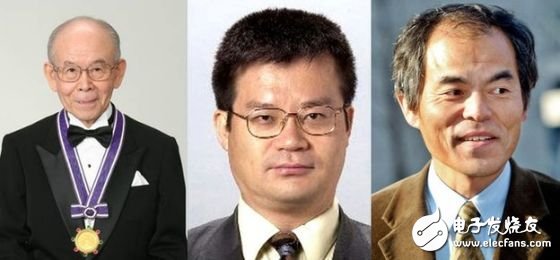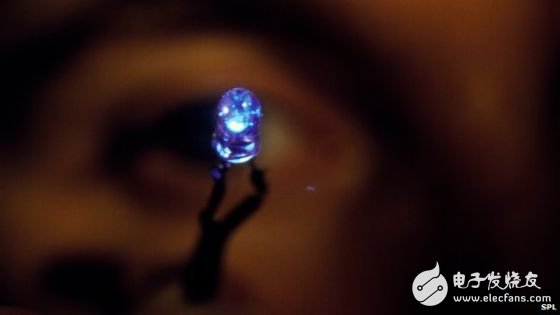The 2014 Nobel Prize in Physics was awarded to three scientists from the United States and Japan for their invention of blue LED technology. Akasaki, Amano and Nakamura Shuji independently developed blue LED technology in the 1990s.

Three Nobel Prize winners in physics
With the newly developed blue LED light source and the existing red and green LED light sources, people can finally produce a more natural and practical white light illumination source through the principle of three primary colors. The three winners will share a prize of 8 million Swedish kronor (about 1.2 million US dollars).
At the press conference held on the 7th, the Nobel Prize Committee announced the names of the three scientists, and they were also remembered in the long list together with the 196 highly respected scholars who won the award since its inception in 1901. Single above. When told the news of the award, Professor Nakamura Shuji is still sleeping in Japan. He said to the author: "This is incredible."
In declaring the award, the Nobel Prize Committee also elaborated on the great significance of the winner's invention and emphasized that the Nobel Prize was established to reward scientists who have made tremendous contributions to the well-being of the entire human race. Olle Inganas, a professor at Linköping University in Sweden and a member of the Nobel Prize Committee, said: "These application awards make Alfred Nobel very pleased."
The chairman of the Nobel Prize Committee, Professor Per Delsing of Chalmers University of Technology in Sweden, introduced the hard-won results of the winners. He said: "Interestingly, many big companies have tried before. They did this, but they all failed. But these people insisted on not giving up, they experimented again and again, and finally succeeded."

Although red and green LED technology has been around for many years, the technical difficulty of blue LEDs is much greater, and it has plagued the scientific community and industry for decades. Without them, we would not be able to synthesize white illumination sources using the principles of the three primary colors.
Now, products using Blu-ray LED technology have entered the world of thousands of households, it lights for you, it exists in your camera and mobile phone. In offices and homes around the world, white lights illuminate the house, and they consume much less energy than incandescent and daylight. In the awards, the Nobel Prize Committee wrote: "The incandescent lamps illuminate the 20th century, and the LED lights will illuminate the 21st century."
Since a quarter of the world's electricity is used for lighting purposes, more energy efficient lamps will become increasingly important in the context of global carbon dioxide emissions. LED lights will also help more than 1.5 billion people around the world say goodbye to the era of no lighting. The lower energy consumption of LED lights will make it possible to use local solar power plants to achieve lighting.
Sir Colin Humphreys, a professor at the University of Cambridge in the United Kingdom, said: "This is a huge achievement. Akasaki, Amano and Nakamura are well-deserved. They invented the blue LED technology to develop bright and energy-saving lamps. More efficient lighting technology paved the way."
One of the winners of this year's Nobel Prize, Nakamura Shuji, who has joined the US nationality, has had a painful past. Due to the invention patent and interest of his blue LED, he experienced a long-standing serious conflict and dispute with his former employer, Nichia.
After Nakamura Shuji developed a breakthrough blue LED technology, Nichia Chemical deprived him of his patent rights, because according to Japanese tradition, employees must sacrifice everything for the company. For the company, scientists and engineers have nothing to do with ordinary employees. Both, so it is impossible to sign a benefit sharing agreement with the American company that stipulates personal research results.
At that time, Nichia Chemical Company paid Nakamura Shuji about his invention of blue LED. The bonus was only 20,000 yen, which was about 200 US dollars according to the exchange rate at that time. So in 2001, the angry Nakamura Shuji took his employer to court, and both sides were against the court. The final court ruled that Nichia Chemical Co., Ltd. should pay Nakamura to two 20 billion yen, according to the current exchange rate of about 200 million US dollars. This huge amount shocked the Japanese society at the time, but the court held that the judgment was quite fair because they assessed that Nakamura’s inventions were worth at least 60 billion yen, or about 580 million.
However, the Japanese company, Nichia Chemical Co., refused to accept the ruling and appealed to the High Court. After four years of long and painful tug-of-war, the High Court finally ruled that Nichia Chemical Co., Ltd. repaid Nakamura’s 840 million yen, which was equivalent to 810 at the exchange rate. Ten thousand dollars in fees. Nakamura Shuji has no choice but to accept this result.
Electrical secondary equipment refers to the low-voltage electrical equipment required for monitoring, controlling, regulating and protecting the work of primary equipment and providing operation conditions or production command signals for operation and maintenance personnel. Such as fuse, control switch, relay, control cable, instrument, signal equipment, automatic device, etc.
Intelligent Secondary Equipment
Intelligent Secondary Equipments,Power Equipments,Portable Switchgear,Park Switchgear
Shandong Shunkai electrical equipment co., LTD. , https://www.chinasdsk.com